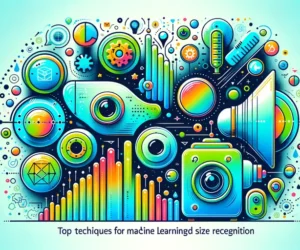
Exploring the Magic of Speech Recognition Algorithms in AI Systems

Introduction
In recent years, the realm of Artificial Intelligence (AI) has made significant leaps, and speech recognition algorithms stand out as one of the most captivating and transformative technologies in this landscape. They enable machines to understand and process human speech, thereby facilitating seamless interaction between humans and computers. The technology finds applications in various fields, from virtual assistants like Google Assistant and Siri to customer service chatbots and transcription services.
This article aims to provide a comprehensive exploration of the workings, advancements, and implications of speech recognition algorithms in AI systems. We will delve into the fundamental concepts, the underlying mechanics, advances in the field, and the future prospects of this enchanting technology. By the end, readers will gain a deeper understanding of how speech recognition not only enhances user experience but also reshapes the interface between humans and machines.
Understanding Speech Recognition Algorithms
At its core, speech recognition is the process of converting spoken language into text. It involves capturing audio input and processing it through various algorithms to output the words spoken by the user. The fundamental components of this process include feature extraction, acoustic modeling, language modeling, and decoding.
Feature Extraction
Feature extraction is the initial step in speech recognition that involves breaking down the audio signal into manageable components that can be analyzed. The aim is to convert an audio waveform into a series of feature vectors, which represent the properties of the sound. Common techniques for feature extraction include Mel-frequency cepstral coefficients (MFCCs), which help in capturing the nuances of human voice by compressing the audio into a more compact form that retains essential information while discarding irrelevant details.
An Introduction to Acoustic Modeling in Speech Recognition SystemsThe extraction of features is crucial because it determines how effectively the subsequent algorithms can learn from the data. Poorly extracted features may result in low accuracy, while well-defined features enhance the precision of the recognition process. Additionally, advancements in machine learning and neural networks have led to the development of sophisticated feature extraction methods that allow speech recognition algorithms to adapt to varying accents, tones, and speech patterns.
Acoustic Modeling
Once the features are extracted, the next step is acoustic modeling, which involves associating the audio features with linguistic units, typically phonemes. Phonemes are the smallest distinct units of sound in a language, and the acoustic model uses a statistical approach to map the features extracted to these phonemes. Traditionally, Gaussian Mixture Models (GMMs) were the standard for acoustic modeling, but advancements in deep learning have paved the way for more efficient models such as Deep Neural Networks (DNNs) and Convolutional Neural Networks (CNNs).
The use of deep learning in acoustic modeling significantly enhances the ability of speech recognition systems to distinguish between similar sounds and improve their performance in noisy environments. As a result, modern speech recognition systems can learn complex patterns in data and provide more reliable outputs. Acoustic modeling techniques can further benefit from training on large datasets to increase their robustness and adaptability to various speech styles.
Language Modeling
Language modeling contributes another layer of complexity to speech recognition systems by using statistical information to predict the likelihood of sequences of words. This process helps in understanding the context and grammar of the spoken language. Language models can be categorized into n-gram models and neural language models.
Deep Dive into End-to-End Architectures for Speech RecognitionN-gram models predict the probability of a word based on its preceding words, while neural language models utilize recurrent neural networks (RNNs) to capture long-range dependencies and context within the text. The shift toward utilizing neural network architectures has resulted in significantly improved language prediction capabilities, making it possible to discern user intent more accurately.
Together, acoustic models and language models work in harmony to improve the efficiency and accuracy of recognition systems. By integrating these components, developers can create systems that not only convert speech to text but also predict what users are likely saying, thereby enhancing the overall user experience.
Advancements in Speech Recognition Technology
The past few years have witnessed remarkable advancements in speech recognition technology, driven largely by developments in deep learning and neural networks. These advancements are redefining the capabilities of speech recognition systems across various applications.
Deep Learning and Neural Networks
The integration of deep learning techniques has revolutionized the capabilities of speech recognition systems. Neural networks, especially Long Short-Term Memory (LSTM) networks, have shown exceptional results in handling sequential data, such as audio streams. These networks are designed to remember past information while considering the current input, making them ideal for processing speech data.
Speech Recognition for People with Speech Impairments: ContributionsAdditionally, architectures such as Transformer networks have also gained traction within the speech recognition community. Unlike traditional neural networks, Transformers are designed to handle attention mechanisms, which allow the model to focus on specific parts of the input while learning dependencies across the entire dataset. This has dramatically improved accuracy in tasks such as automatic speech recognition (ASR).
The emergence of pre-trained models, such as those from the BERT (Bidirectional Encoder Representations from Transformers) family, has further accelerated the development of speech recognition algorithms. These models can be fine-tuned on smaller datasets to perform specific tasks, making them both efficient and versatile.
Multilingual and Cross-Domain Models
As the demand for global communication increases, speech recognition systems are evolving to support multiple languages and dialects. Traditionally, developing a speech recognition model for a new language required significant amounts of labeled training data and resources. However, recent advancements in speech technology have led to the creation of multilingual models, which can recognize and process multiple languages without needing separate models for each one.
Furthermore, cross-domain learning is gaining traction, enabling systems to leverage knowledge from one domain to improve performance in another. For instance, a model trained on conversational speech can perform better in recognizing medical terminology or formal speeches due to the shared patterns in language usage. This broad applicability not only enhances versatility but also reduces the need for developing distinct models for every application.
How Speech Recognition is Transforming Customer Support ServicesReal-Time Processing and Noise Robustness
In practical applications, real-time processing capability is of utmost importance. Users expect immediate responses from systems, whether they are using virtual assistants or speech-to-text software. The advancements in hardware acceleration, such as the use of Graphics Processing Units (GPUs), have drastically improved the speed and efficiency of speech recognition algorithms, allowing them to process voice inputs in real time.
Moreover, dealing with noisy environments remains a challenge for many speech recognition systems. Noise-robust techniques, including signal processing methods and advanced machine learning algorithms that filter background noise, have become essential to improving performance. The ability of these systems to understand speech even in loud settings enhances their usability and broadens their practical applications.
Future Prospects of Speech Recognition

The future of speech recognition algorithms is bright, with numerous exciting possibilities on the horizon. As technology continues to improve and applications multiply, the potential of this captivating field is boundless.
A Beginner’s Guide to Implementing Speech Recognition APIsHuman-Computer Interaction and Accessibility
One of the most significant impacts of speech recognition technology is its ability to enhance human-computer interaction. As systems become more sophisticated, users will increasingly interact with machines through natural language, leading to more intuitive and user-friendly interfaces. This is particularly important for people with disabilities, as speech recognition can bridge communication gaps and provide access to technology that was previously challenging.
As speech recognition algorithms refine their capabilities, we can expect more inclusive applications that cater to various needs, such as voice-controlled devices for individuals with mobility impairments and communication aids for those with speech difficulties. Accessibility will continue to be a priority, making technology more available to everyone.
Integration with Other AI Technologies
Looking ahead, the convergence of speech recognition with other AI technologies, such as machine learning, natural language processing (NLP), and computer vision, will open up new frontiers. The synthesis of these technologies will enable systems to not only recognize speech but also understand context, sentiment, and intent comprehensively. For your speech recognition system to work in tandem with a visual input processing system, consider a scenario where it recognizes user commands and then provides a relevant visual output based on the spoken input.
Ethical Considerations and Challenges
As with any technology, the growth of speech recognition raises important ethical considerations and potential challenges. Issues surrounding privacy, data security, and bias in algorithms need to be addressed to ensure fair and responsible usage. Transparency in how voice data is handled, what measures are in place to secure sensitive information, and safeguarding against algorithmic bias are essential to build public trust in these technologies.
Furthermore, as AI systems continue to evolve and permeate daily life, there will be an increasing need for regulations and standards to govern their applications, ensuring they serve their purpose without infringing on individual rights. Developers, policymakers, and stakeholders must collaborate to create a framework that fosters innovation while upholding ethical practices.
Conclusion
In conclusion, the evolution of speech recognition algorithms represents a remarkable achievement in the field of Artificial Intelligence. With a clear understanding of how these algorithms function—from feature extraction and acoustic modeling to language modeling—one can appreciate the technological advancements that have transformed our interaction with machines. The integration of deep learning, multilingual support, real-time processing, and innovations in noise robustness has propelled speech recognition technology into a new era.
As we look toward the future, the potential implications of these algorithms are profound, offering enhancements in human-computer interaction and promoting accessibility for individuals with disabilities. The convergence of technologies presents new opportunities, yet ethical considerations must not be overlooked. By addressing privacy concerns, ensuring fairness, and fostering collaboration, we can harness the full potential of speech recognition algorithms while creating a responsible framework for their development and use.
The journey of speech recognition is only just beginning, and we anticipate exciting developments that will shape the way we communicate, interact, and engage with technology in the years to come. The magic of speech recognition is indeed a captivating narrative within the larger story of AI, embodying the promise of a future where human-machine interaction becomes increasingly seamless, efficient, and meaningful.
If you want to read more articles similar to Exploring the Magic of Speech Recognition Algorithms in AI Systems, you can visit the Speech Recognition category.



You Must Read